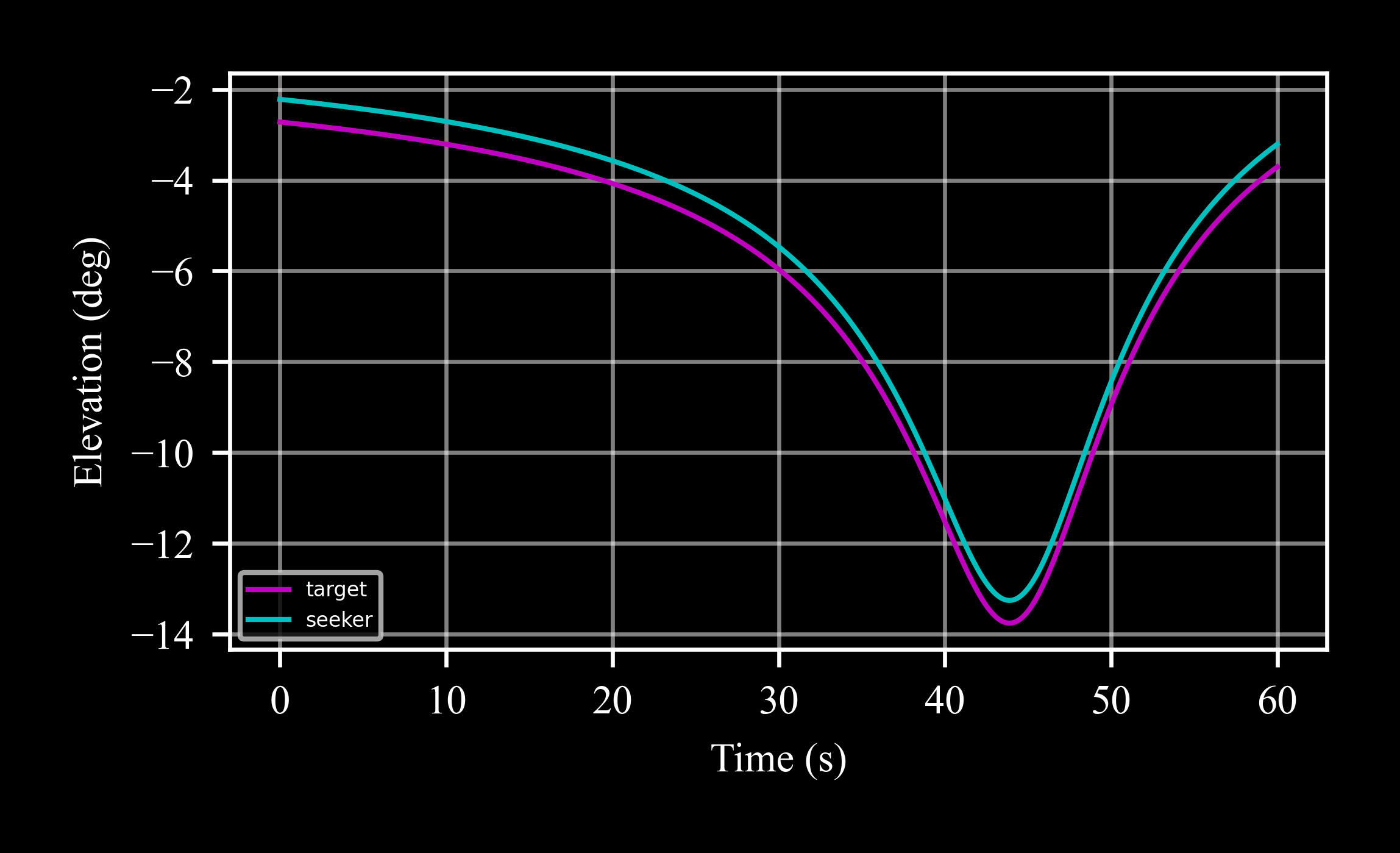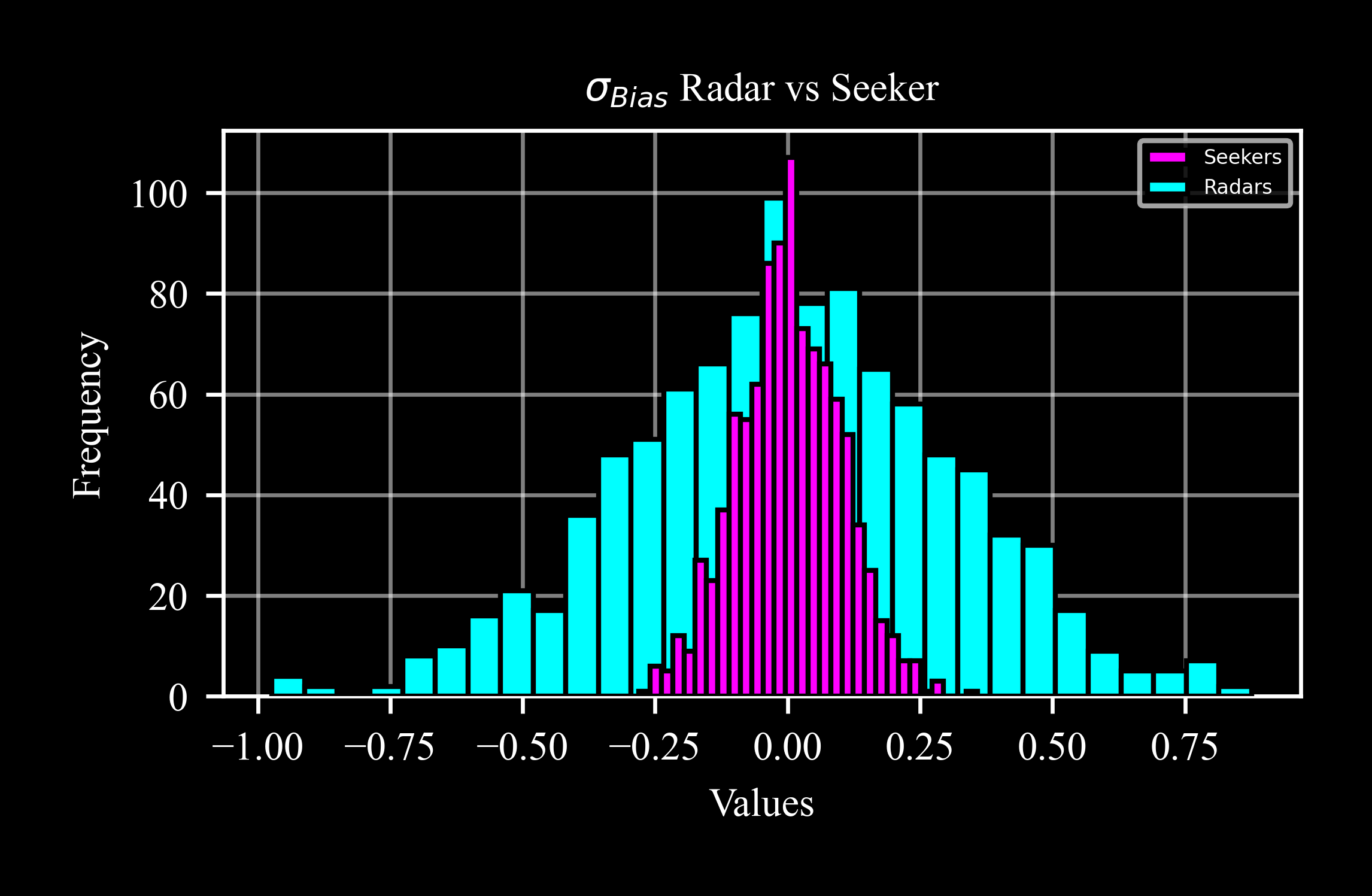c4dynamics.sensors.seeker.seeker.bias#
- property seeker.bias: float#
Gets and sets the object’s bias.
The bias is a random variable generated once at the stage of constructing the instance by the errors model:
\[bias = std \cdot randn\]Where bias_std is a parameter with default value of 0.1° for
seekerobject, and 0.3° forradarobject.To get the bias generated by the errors model, or to override it, the user may call
biasto get or set the final bias error.- Parameters:
bias (float) – Required bias, [radians].
- Returns:
bias (float) – Current bias, [radians].
Example
The following example for a seeker object is directly applicable to a radar object too. Simply replace
c4d.sensors.seeker(origin = pedestal,...)withc4d.sensors.radar(origin = pedestal,...).Required packages:
>>> import c4dynamics as c4d >>> from matplotlib import pyplot as plt >>> import numpy as np
Settings and initial conditions:
(see
seekerexamples for more details):Target:
>>> tgt = c4d.datapoint(x = 1000, y = 0, vx = -80 * c4d.kmh2ms, vy = 10 * c4d.kmh2ms) >>> for t in np.arange(0, 60, 0.01): ... tgt.inteqm(np.zeros(3), .01) ... tgt.store(t)
Origin:
>>> pedestal = c4d.rigidbody(z = 30, theta = -1 * c4d.d2r)
Ground truth reference:
>>> skr_ideal = c4d.sensors.seeker(origin = pedestal, isideal = True)
Tracking with bias
Define a seeker with a bias error only (mute the scale factor and the noise) and set it to 0.5° to track a constant velocity target:
>>> skr = c4d.sensors.seeker(origin = pedestal, scale_factor_std = 0, noise_std = 0) >>> skr.bias = .5 * c4d.d2r >>> for x in tgt.data(): ... skr_ideal.measure(c4d.create(x[1:]), t = x[0], store = True) ... skr.measure(c4d.create(x[1:]), t = x[0], store = True)
Compare the biased seeker with the true target angles (ideal seeker):
>>> ax = plt.subplot() >>> ax.plot(*skr_ideal.data('el', scale = c4d.r2d), label = 'target') >>> ax.plot(*skr.data('el', scale = c4d.r2d), label = 'seeker')

Example
The distribution of normally generated random variables is characterized by its bell-shaped curve, which is symmetric about the mean. The area under the curve represents probability, with about 68% of the data falling within one standard deviation (1σ) of the mean, 95% within two, and 99.7% within three, making it a useful tool for understanding and predicting data behavior.
In radar objects, and seeker objects in general, the bias and scale factor vary among different instances to allow a realistic simulation of performance behavior in a technique known as Monte Carlo.
Let’s examine the bias distribution across mutliple radar instances with a default bias_std = 0.3° in comparison to seeker instances with a default bias_std = 0.1°:
>>> from c4dynamics.sensors import seeker, radar >>> seekers = [] >>> radars = [] >>> for i in range(1000): ... seekers.append(seeker().bias * c4d.r2d) ... radars.append(radar().bias * c4d.r2d)
The histogram highlights the broadening of the distribution as the standard deviation increases:
>>> ax = plt.subplot() >>> ax.hist(seekers, 30, label = 'Seekers') >>> ax.hist(radars, 30, label = 'Radars')
